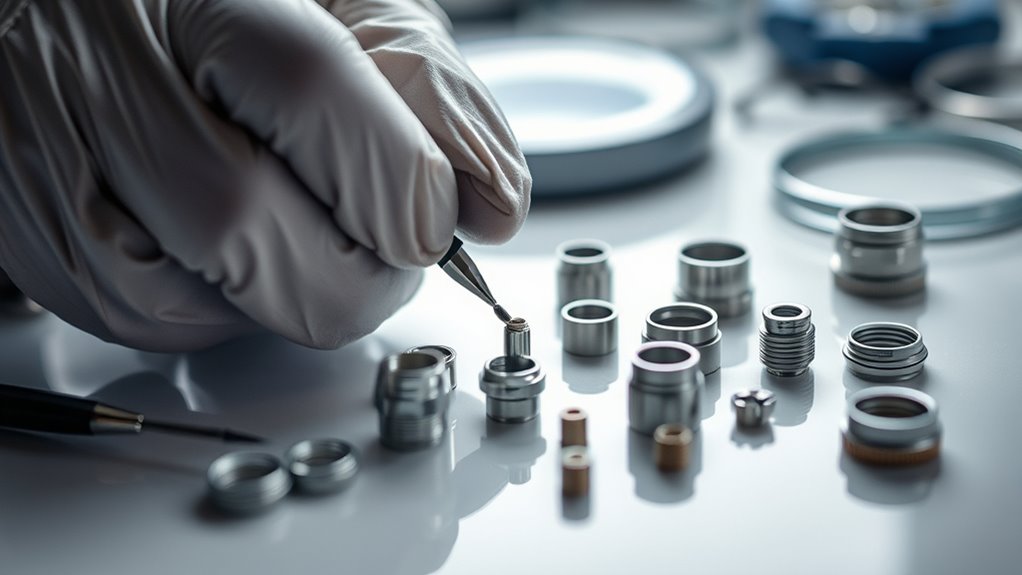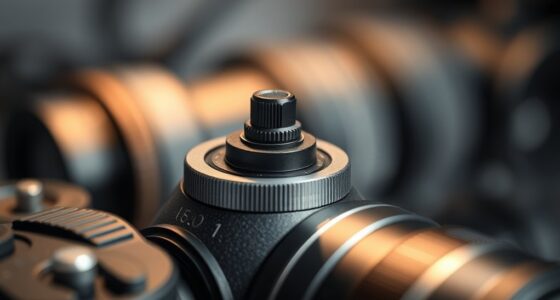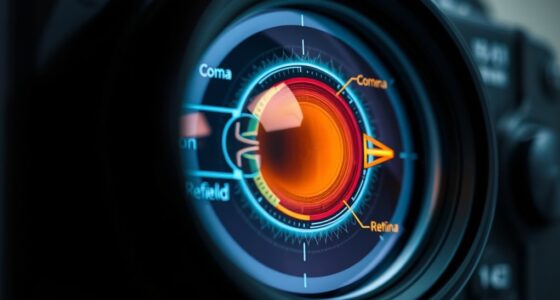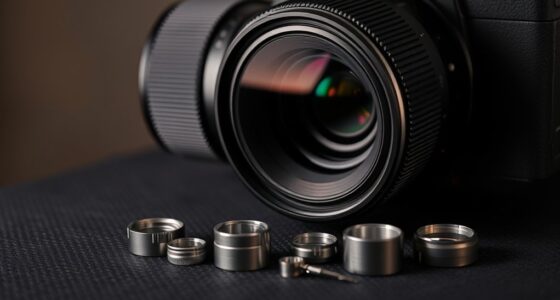To avoid mistakes in backfocus and spacer maintenance, always keep components clean, handle them gently, and store in safe environments. Use the right tools, follow manufacturer guidelines, and don’t rush installations or calibration. Regularly check alignment, test your focus, and document adjustments for future reference. Avoid damaged spacers and ignore environmental factors like dust and humidity. Mastering these practices helps keep your system precise—continue on to learn detailed tips for perfect maintenance.
Key Takeaways
- Follow manufacturer guidelines and specifications for proper installation and calibration processes.
- Regularly clean and inspect spacers and backfocus components to prevent dirt and wear from affecting performance.
- Use appropriate precision tools and avoid excessive force during setup to prevent damage and misalignment.
- Conduct routine calibration and testing with proper equipment to ensure consistent focus accuracy.
- Monitor environmental conditions like temperature and humidity, and store components properly to maintain optimal operation.
Neglecting Proper Cleaning and Handling of Components
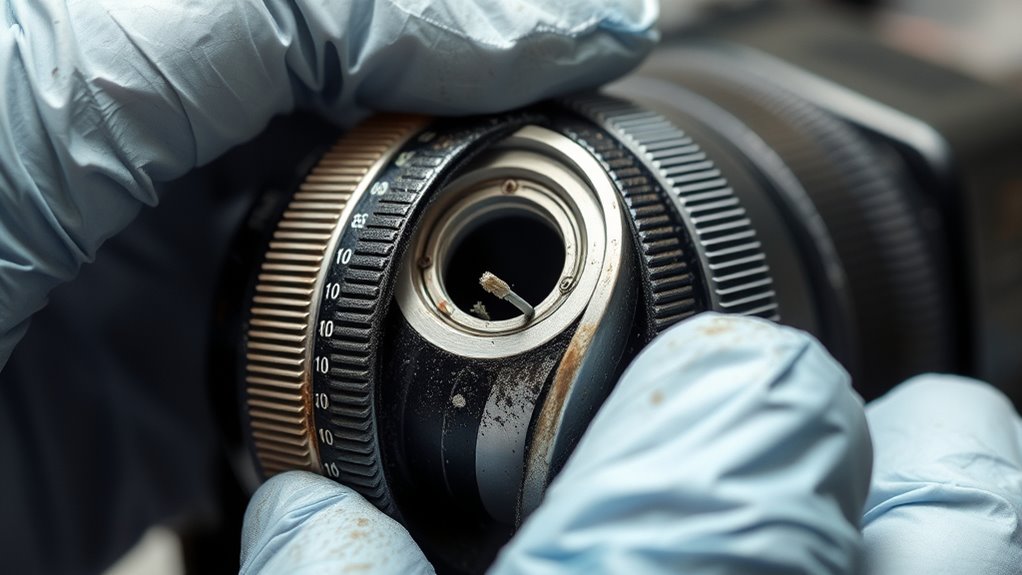
Neglecting proper cleaning and handling of backfocus and spacer components can lead to dirt, dust, and debris buildup that affects performance. Regular cleaning schedules are essential to keep these parts free of contaminants that can cause misalignment or blurry images. Proper component storage also plays a vital role in maintaining their condition; always store spacers and backfocus parts in clean, dry containers away from dust and moisture. Handling should be gentle, avoiding direct contact with delicate surfaces to prevent scratches or damage. Additionally, understanding the maintenance requirements of these components can help prevent issues before they arise. By establishing consistent cleaning routines and safe storage practices, you guarantee that these components stay in prime condition. This proactive care minimizes risks and helps maintain accurate focus adjustments, ultimately improving the reliability and quality of your optical system.
Using Incorrect Tools or Applying Excessive Force
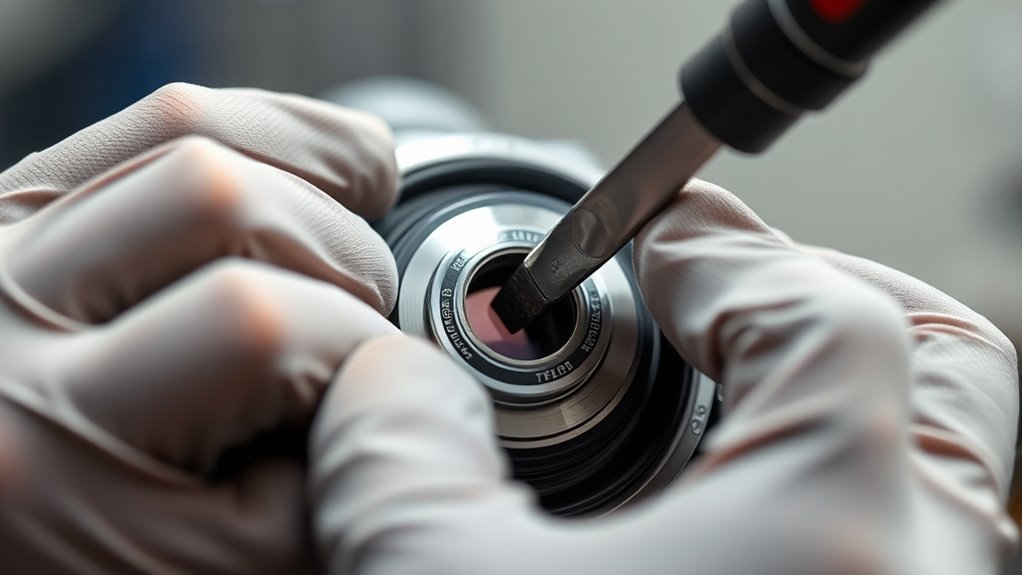
Using the wrong tools or applying too much force can easily damage delicate backfocus and spacer components. Incorrect tool selection can lead to scratches, dents, or misalignment, compromising performance. Excessive force application risks cracking or deforming parts, making repairs costly or impossible. Always use tools designed for precision, like non-marring screwdrivers or tweezers, and follow proper techniques. Here’s a quick guide:
| Issue | Cause | Solution |
|---|---|---|
| Damage from wrong tools | Incorrect tool selection | Use appropriate, specialized tools |
| Component breakage | Excessive force application | Apply gentle, controlled pressure |
| Misalignment | Improper handling | Follow manufacturer guidelines |
| Wear and tear | Repeated improper use | Use tools correctly and sparingly |
Additionally, understanding proper maintenance techniques can prevent many of these issues before they occur.
Ignoring Manufacturer’s Specifications and Guidelines
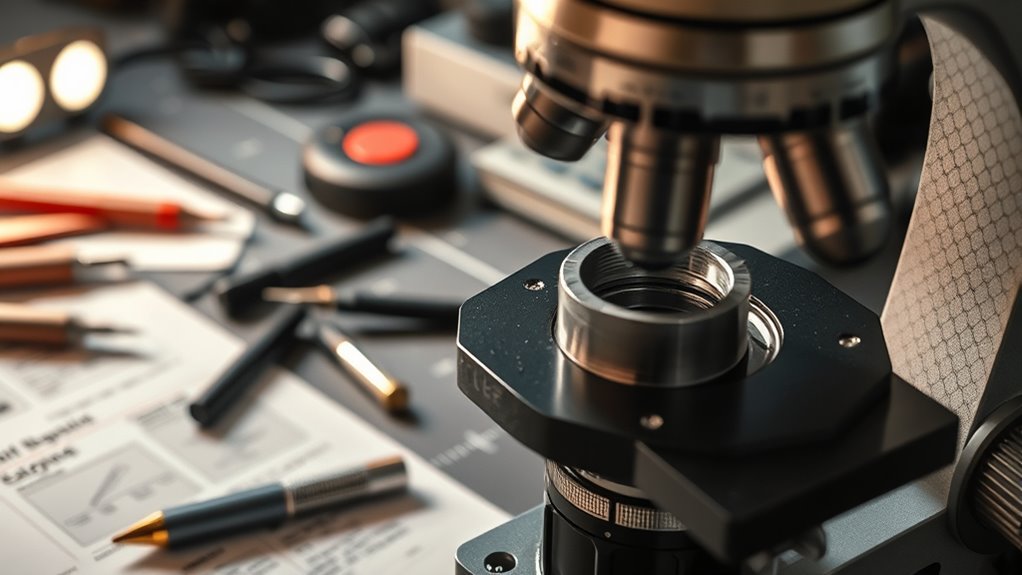
Ignoring your manufacturer’s specifications can lead to improper adjustments and damage. Always follow the official manuals and respect the technical limits they set. Using recommended parts guarantees your equipment functions reliably and safely. Additionally, understanding the importance of natural materials in Waldorf toys highlights the value of adhering to quality standards and guidelines to ensure safety and durability.
Follow Official Manuals
While it might be tempting to rely on your own experience or assumptions, following the official manuals is essential for proper backfocus and spacer maintenance. Manual procedures outlined by manufacturers ensure you handle components correctly and avoid damaging delicate parts. These manuals specify precise steps for adjusting spacers and maintaining backfocus, reducing the risk of errors. They also provide important details about component compatibility, ensuring you’re using the right parts together. Ignoring these guidelines can lead to misalignments or equipment failure. Always prioritize the manufacturer’s instructions over unofficial advice. By adhering to official manuals, you guarantee that your maintenance is accurate and safe, ultimately extending the lifespan of your equipment and ensuring peak performance. Additionally, understanding proper alignment techniques can significantly improve your results and prevent costly mistakes.
Respect Technical Limits
Neglecting manufacturer’s specifications and guidelines can lead to serious equipment issues. Always respect the technical limits set by the manufacturer to guarantee safe and reliable operation. Using precision tools outside the recommended tolerances can damage internal components or cause misalignment. Technical specifications are designed to protect your equipment from excessive stress, heat, or wear. Ignoring these limits may result in costly repairs or reduced lifespan. Before making adjustments or replacing parts, double-check the manufacturer’s guidelines. Adhering to these parameters helps maintain maximum performance and prevents accidents. Remember, precision tools are created to work within specific ranges; forcing them beyond these ranges compromises their accuracy and your equipment’s integrity. Respect the technical limits, and you’ll avoid unnecessary setbacks and ensure smooth operation. Understanding equipment limitations is crucial for maintaining optimal performance and preventing damage.
Use Recommended Parts
Using parts that aren’t recommended by the manufacturer can lead to equipment failures and safety risks. Always follow the recommended specifications to guarantee proper lubrication and component compatibility. Using incompatible parts may cause misalignment or damage to your backfocus system and spacers. Poor lubrication can lead to increased wear, friction, and eventual failure. Don’t cut corners by installing generic or unverified components, as they might not withstand operational stresses. Stick with manufacturer-approved parts to maintain peak performance, safety, and longevity. Regularly check that all parts meet the original guidelines, especially when replacing spacers or backfocus components. Additionally, understanding the importance of proper maintenance practices helps in preventing costly repairs and ensures your equipment functions reliably and safely over time.
Overlooking the Importance of Accurate Alignment Checks
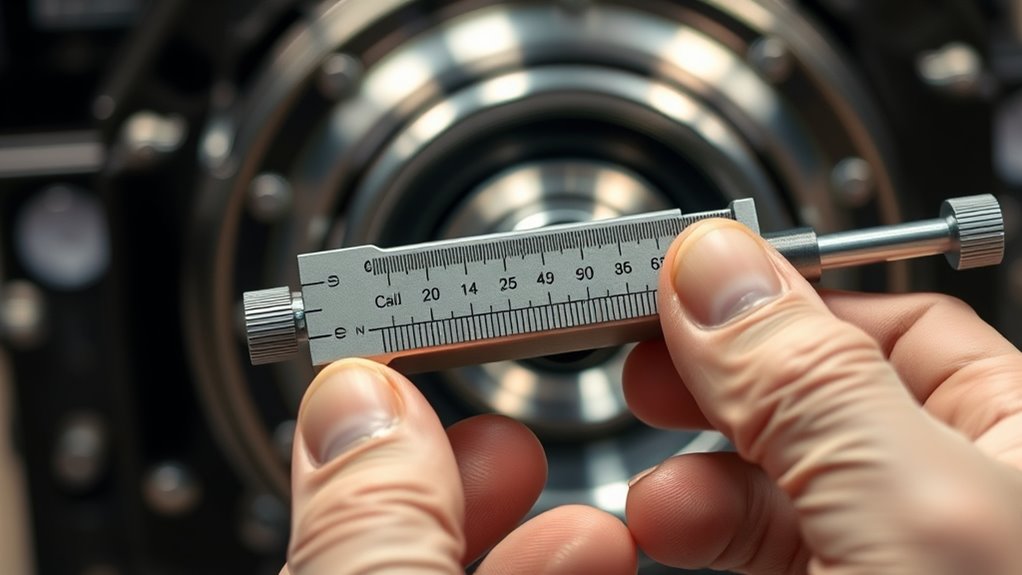
Accurate alignment checks are essential to guaranteeing your backfocus and spacers function correctly, yet they are often overlooked. Without regular checks, small misalignments can cause blurry images and inconsistent focus. Prioritizing proper alignment precision helps you catch issues early, preventing costly repairs or downtime. Incorporate routine maintenance scheduling to verify your setup’s accuracy, especially after any adjustments or equipment changes. Skipping these checks can lead to gradual deterioration in performance, making it harder to achieve sharp images. Don’t rely on visual inspection alone; use precise tools to measure and confirm alignment. Staying diligent with alignment accuracy ensures your system remains reliable, saving you time and effort in the long run. Regular checks are a simple but crucial step in optimal backfocus and spacer maintenance. Environmental considerations play a vital role in maintaining the longevity and performance of your equipment, so integrating eco-friendly practices into your routine can also be beneficial.
Failing to Calibrate or Test Backfocus Regularly
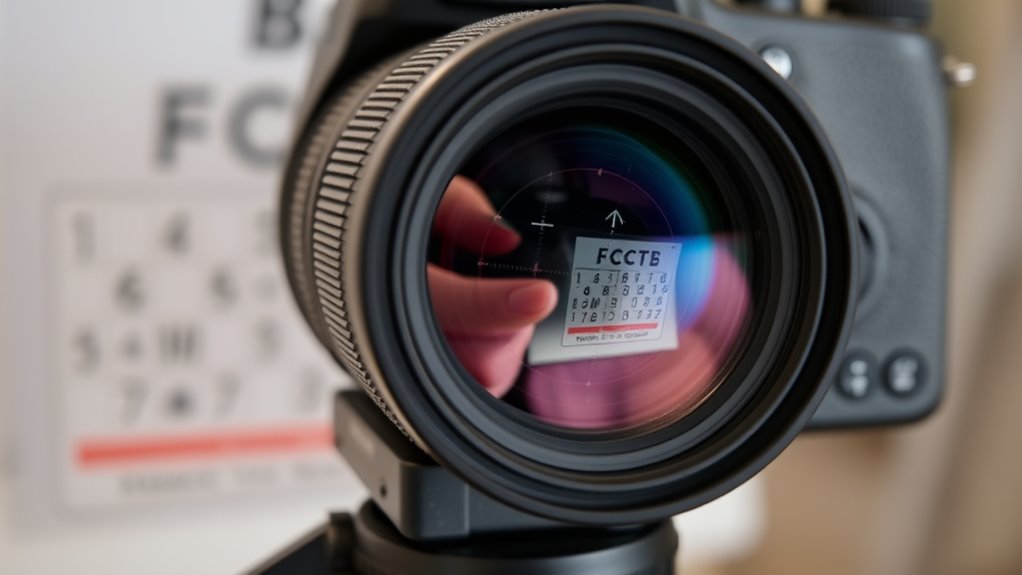
Regularly calibrating and testing your backfocus is essential to maintain ideal image quality. Skipping these checks can result in blurry or soft photos, even with perfectly aligned equipment. Using the right tools guarantees your backfocus remains precise and consistent over time. Additionally, performing routine product reviews can help identify potential issues early and ensure your camera setup functions optimally.
Importance of Routine Checks
Failing to calibrate or test backfocus regularly can lead to blurry images and inconsistent focus performance. Routine scheduling checks helps ensure component durability and keeps your equipment functioning at its best. By performing regular inspections, you prevent small issues from escalating into costly repairs or replacements. Here are four key reasons to prioritize routine checks:
- Detect wear and tear early, extending component lifespan
- Maintain precise backfocus calibration for sharp images
- Identify loose spacers or misalignments before they worsen
- Save time and money by avoiding emergency repairs
- Incorporate regular maintenance to ensure consistent focus accuracy and equipment reliability
Consistent checks keep your gear in top shape, ensuring reliable performance and avoiding the pitfalls of neglect. Incorporate these routines into your maintenance schedule to maximize your equipment’s longevity and imaging quality.
Impact on Image Quality
When you neglect to calibrate or test your backfocus consistently, your images can suffer from softness and lack of sharpness. Poor lens calibration causes your camera to miss perfect focus, resulting in blurry details. Without regular checks, spacer selection may become inaccurate, further degrading image quality. Over time, small misalignments compound, making it harder to achieve precise focus. This can be especially problematic in macro or portrait photography, where sharpness is critical. Failing to maintain proper backfocus settings means you risk wasting time retaking shots or ending up with unusable images. Regular calibration ensures your lens and backfocus are aligned, preserving image clarity. Proper spacer selection supports consistent focus accuracy, ultimately delivering crisper, more detailed photographs. Additionally, understanding the importance of accurate backfocus adjustment can significantly improve your overall image quality.
Tools for Accurate Calibration
Using the right tools is crucial for achieving precise backfocus calibration. Accurate results depend on reliable equipment that meets calibration standards. Here are four key tools you should consider:
- Digital Focus Test Chart – Provides clear, measurable targets for fine-tuning focus.
- Precision Focus Magnifier – Ensures exact alignment during calibration.
- Calibration Standards – Serve as benchmarks for verifying and maintaining calibration accuracy.
- Autofocus Test Software – Automates testing, helping you detect focus issues quickly.
Investing in quality precision tools ensures your backfocus adjustments are consistent and dependable. Regular testing with these tools helps prevent calibration drift, keeping your images sharp and true to color. Remember, proper calibration standards are crucial for maintaining optimal performance over time.
Rushing the Installation Process Without Careful Adjustment
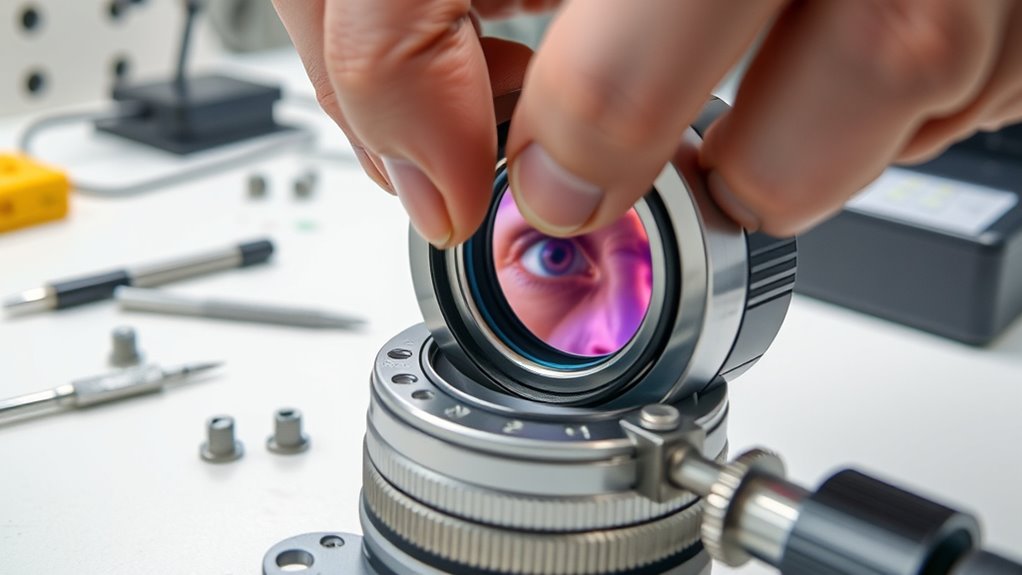
Rushing through the installation process without careful adjustment can lead to misaligned backfocus and improper spacer placement. When you skip detailed calibration, components may not fit together correctly, causing focus issues. Take time to verify component compatibility beforehand, ensuring parts work seamlessly. Proper user training is essential—you need to understand each step to avoid mistakes. Visualize this setup:
| Step | Key Focus | Result |
|---|---|---|
| Check component | Compatibility and fit | Smooth installation |
| Measure adjustments | Precise backfocus | Sharp, clear images |
| Secure spacers | Firm, correct placement | Consistent focus |
| Test focus | Fine-tune with care | Accurate results |
| Final review | Verify all connections | Reliable operation |
Take your time; rushing compromises performance and leads to costly errors.
Using Low-Quality or Damaged Spacers and Parts
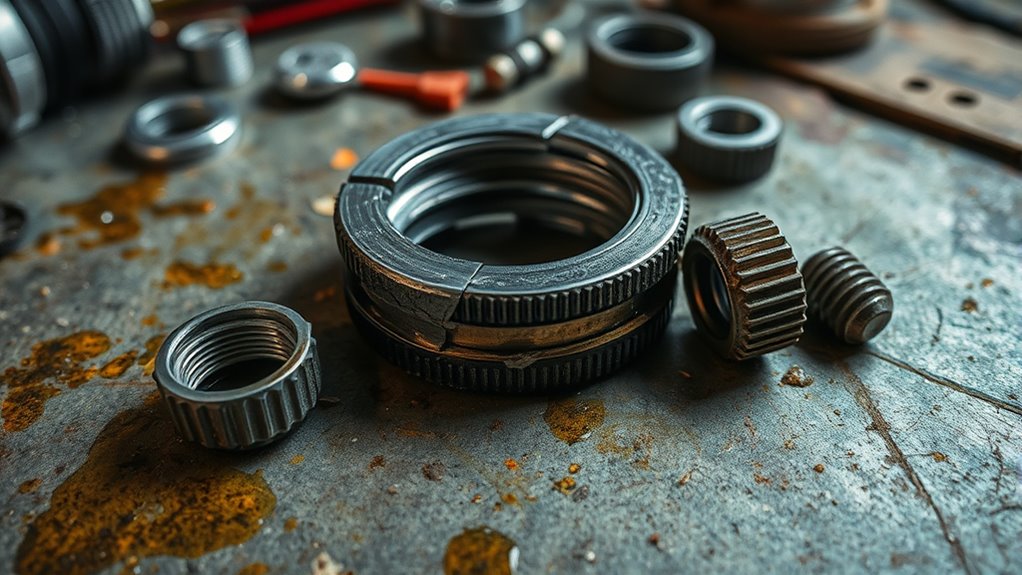
Low-quality or damaged spacers and parts can severely compromise your backfocus and overall system stability. Poor spacer quality often leads to inconsistent focus adjustments, while component damage can cause misalignments that are hard to correct. To avoid these issues, consider these critical points:
Using damaged or low-quality spacers can disrupt focus and system stability. Always inspect and replace worn parts promptly.
- Check spacer material—cheap materials may warp or wear quickly.
- Inspect for cracks or dents—damaged components can shift or fail unexpectedly.
- Use genuine parts—counterfeit or subpar components risk damage and poor performance.
- Replace worn spacers promptly—ignoring damage can lead to costly recalibrations or equipment failure.
Forgetting to Document or Note Adjustments for Future Reference
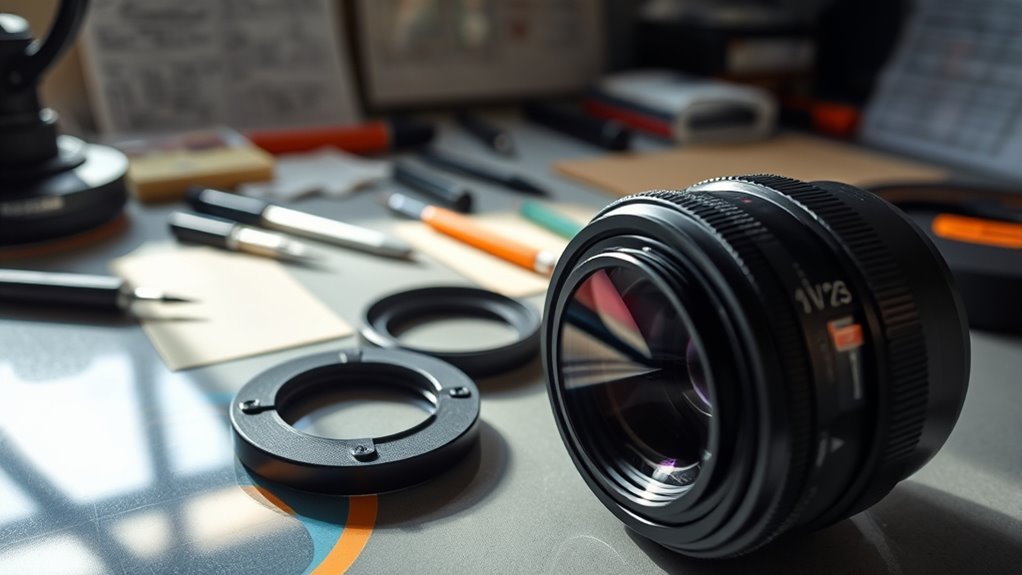
When you neglect to document or note your focus adjustments and spacer settings, it becomes difficult to replicate successful calibrations later. Without proper records, you might spend unnecessary time recalibrating or guessing the correct settings for future sessions. Always keep detailed logs of your adjustment process, noting the specific spacer sizes and focus positions that worked best. Maintaining thorough maintenance records ensures you have a reference point if things go off track or if you need to troubleshoot issues. By consistently recording these details, you save time and reduce errors, making future adjustments smoother. Don’t underestimate the value of organized notes; they’re essential for maintaining accurate backfocus and spacer calibration over time.
Disregarding Environmental Factors That Affect Maintenance
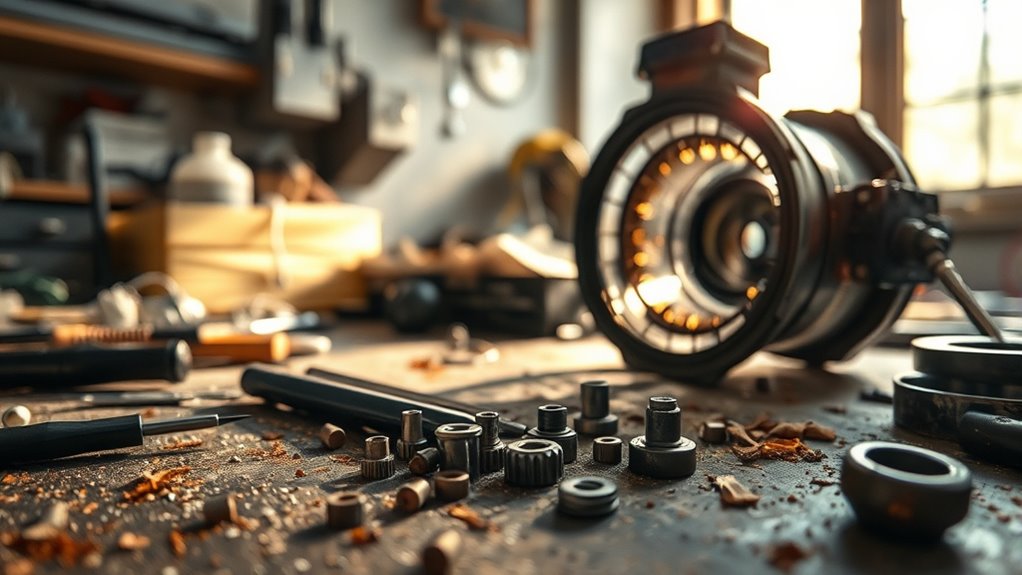
Neglecting to contemplate environmental factors can undermine your backfocus and spacer maintenance efforts. Environmental impact, such as temperature fluctuations, humidity, dust, and vibrations, directly affects your equipment’s performance. Ignoring these factors can lead to inaccurate adjustments and frequent readjustments. To optimize maintenance scheduling, consider these key points:
- Monitor temperature changes that can cause materials to expand or contract.
- Keep humidity levels in check to prevent corrosion or moisture buildup.
- Protect your equipment from dust and debris that may interfere with delicate components.
- Minimize vibrations from nearby machinery that can shift spacers or backfocus settings.
Frequently Asked Questions
How Often Should Backfocus and Spacer Maintenance Be Performed?
You should perform backfocus and spacer maintenance according to your calibration schedules, ideally every 6 to 12 months. Regularly check your maintenance checklists to guarantee all components are functioning correctly. If you notice any issues like difficulty achieving focus or inconsistent results, it’s a sign to perform maintenance sooner. Consistent upkeep keeps your equipment accurate and reliable, preventing costly errors and ensuring peak performance.
What Are the Signs of Worn or Damaged Spacers?
Like cracks in a mirror, worn spacers reveal themselves through misalignment indicators and spacer wear. You’ll notice blurry images, inconsistent focus, or difficulty maintaining sharpness. These signs point to damage or deterioration, and ignoring them risks worsening image quality. Regularly check for uneven spacing or loose parts. When signs appear, it’s time to substitute or service your spacers to guarantee your equipment stays precise and reliable.
Can Incorrect Alignment Cause Equipment Damage?
Incorrect alignment can definitely cause equipment damage if you’re not careful. When alignment precision suffers, components can experience undue stress, leading to wear or breakage over time. Poor spacer durability also worsens the problem, as worn spacers may shift or fail, compromising the whole setup. You need to regularly check your alignment and spacers to prevent damage, ensuring your equipment stays in top condition and performs reliably.
Are There Specific Cleaning Agents Recommended for Components?
Think of your equipment as a delicate garden—using the right cleaning agents is essential. You should opt for gentle, non-abrasive cleaners specifically formulated for optical components, ensuring they’re compatible with your device’s materials. Always check manufacturer recommendations for component compatibility before cleaning, as harsh chemicals can damage coatings or surfaces. Proper cleaning preserves performance and extends the lifespan of your equipment, much like tending carefully to your garden yields healthy blooms.
How Do Environmental Conditions Impact Maintenance Procedures?
Environmental factors like dust, humidity, and temperature fluctuations substantially impact your maintenance schedule. High humidity can cause corrosion, so you need to clean and inspect components more frequently. Dust accumulation requires regular cleaning to prevent interference with backfocus and spacers. Extreme temperatures may accelerate wear, prompting you to adjust your maintenance timing. Staying attentive to these conditions helps guarantee peak performance and extends the lifespan of your equipment.
Conclusion
Did you know that improper backfocus and spacer maintenance can lead to image quality issues, costing you hours of troubleshooting? By avoiding these 9 common mistakes, you’ll make sure your equipment stays in top shape and performs reliably. Remember, regular checks and proper handling can extend the lifespan of your components and save you money in the long run. Don’t overlook these tips—your equipment—and your results—will thank you.
